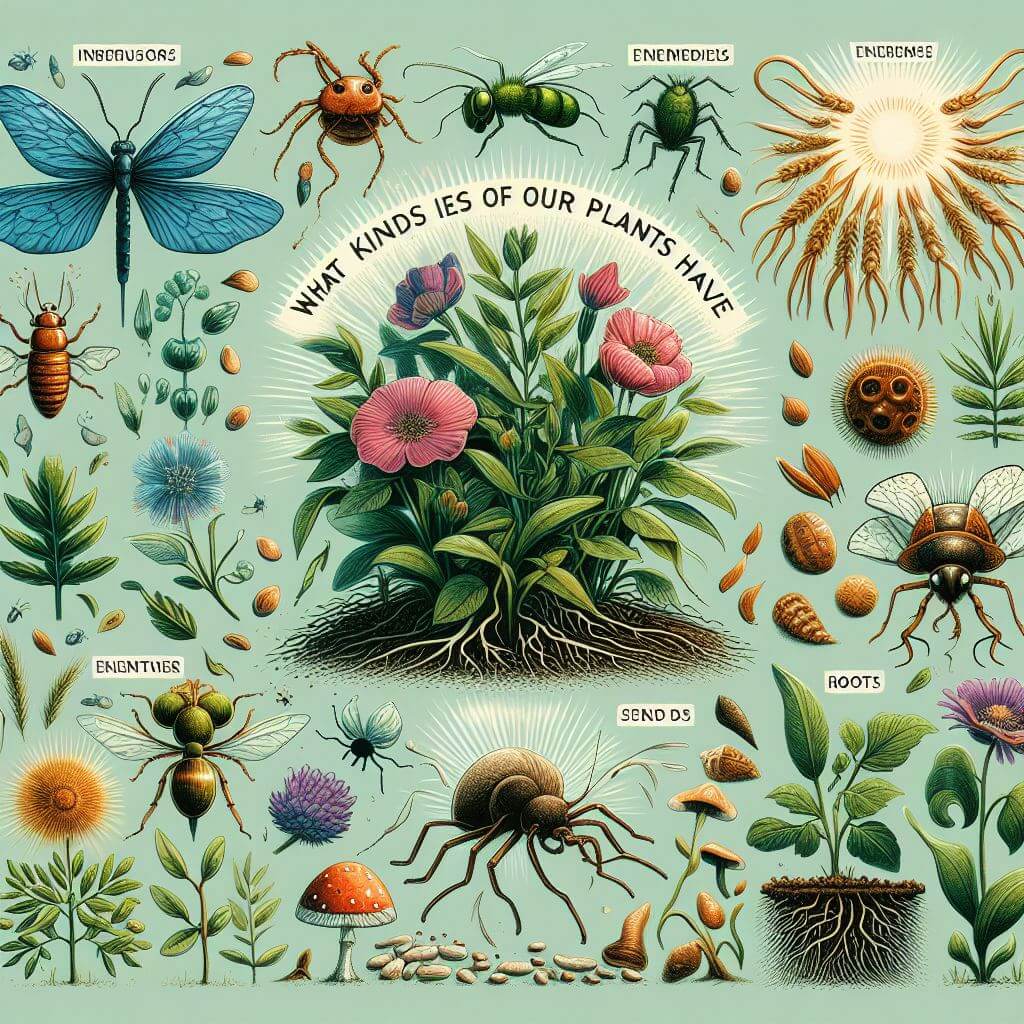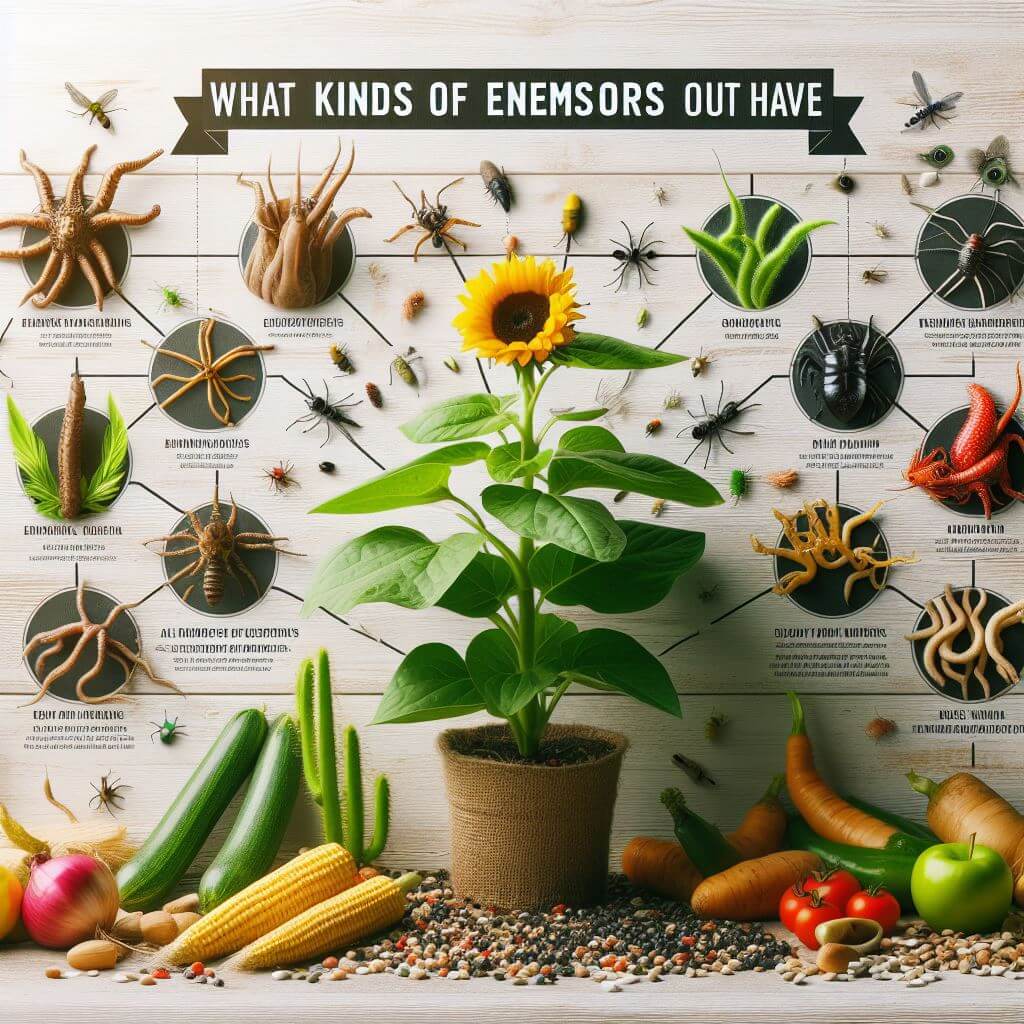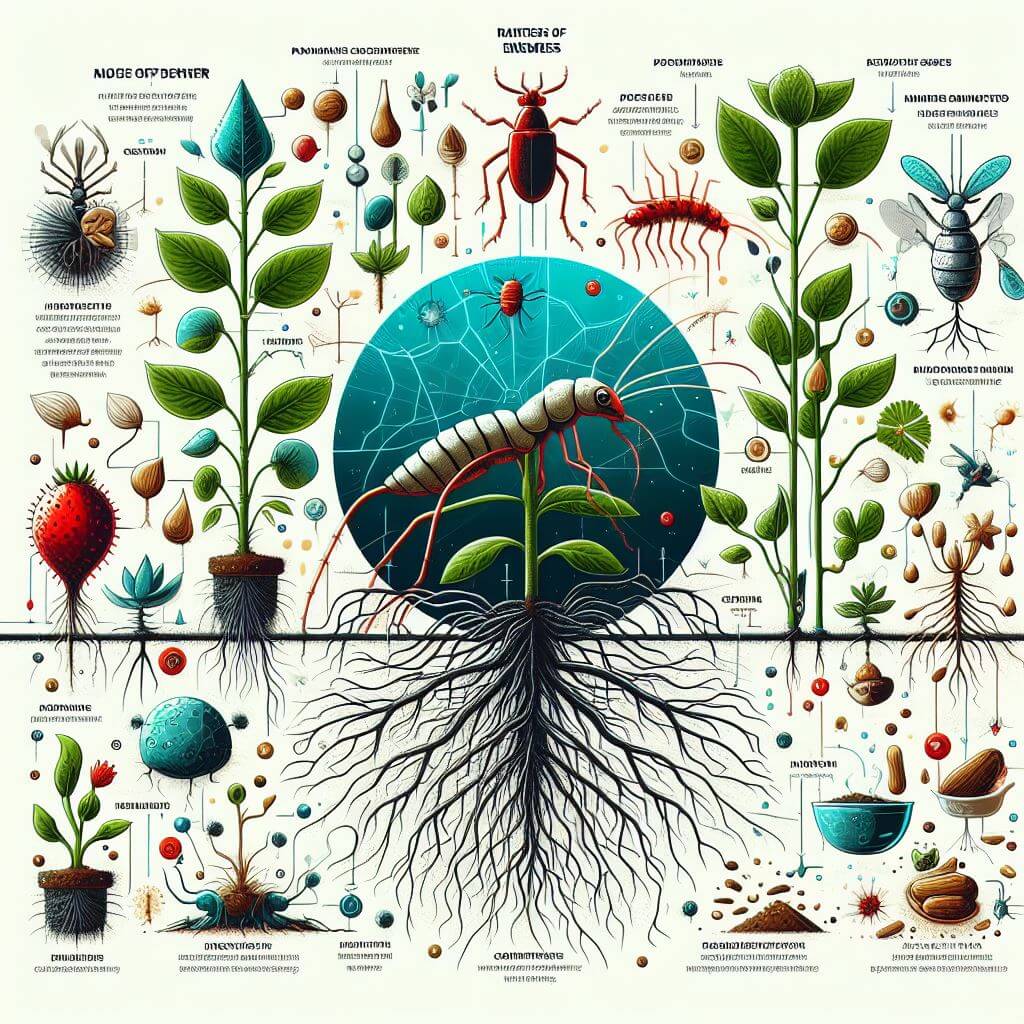Explore the challenges faced by cultivated plants, from invasive weeds to insect pests and harmful fungi. Learn about the significant impact these enemies can have on crop yields, and discover strategies to safeguard plants from the diverse array of threats in agriculture.

Most of the plants that we grow in our fields and gardens cannot get along very well by themselves. We must plant the seeds and then cultivate the plants that come up. We must also protect the growing plants from various kinds of enemies such as weeds, insect pests, and harmful fungi. No one really knows just how much damage the enemies of cultivated plants do every year. However, all of them together may reduce the yields of our crops by as much as 20 per cent. In this country alone, the losses caused by these enemies of our plants may run as high as 5 billion dollars a year or even more. Whatever the actual amount may be, these losses are very serious not only to farmers but to all of us.
One of the main problems in raising cultivated plants is to keep weeds from growing with them. Weeds take from the soil the minerals and moisture that our farm and garden plants need. Tall weeds shade our plants and keep the sunlight away from them. Weeds may be planted without our knowing it. Crop seeds often have weed seeds mixed in with them. A weed known as dodder has seeds almost exactly the same size and shape as clover seeds. If any dodder plants are harvested with the clover, there are sure to be dodder seeds mixed in with the clover seeds. The seeds of small grains such as wheat and oats often contain the tiny bulbs of wild onion and the seeds of ragweed and quack grass. Weed seeds are also scattered by wind, water, animals, and so on. However, many weeds grow from seeds or rootlike parts left in the soil from the year before. Not all of the weed seeds sprout in any one year. Weeds will keep on coming up for many years even though not a single weed is allowed to go to seed.

Cultivated plants are also attacked by many different parasites. These are animals and plants that live on or in our crop plants and get food from them. Most of the animal parasites are insects and similar animals. At least 10,000 kinds of insect pests harm our farm and garden plants. Sometimes the insect larva does the damage, sometimes the adult insect, and sometimes both forms. Corn, wheat, beans, potatoes, and other crops are injured by the larvae of the stalk borer, which bore into the stems and feed there. Cotton plants are damaged most by the larvae of the boll weevil. However, adult aphids, or plant lice, injure plants when they suck the juices from the stems and leaves. Scale insects, which harm fruit trees, and chinch bugs, which destroy entire fields of grain, both do the most damage as adults.
Dodder is a seed plant that is a parasite on cultivated plants. But most of the plant parasites are non-green plants, or fungi. You know that fungi cannot make their own food. So some kinds live on or in green plants and get their food from them. The fungi that do this seriously injure and often destroy the green plants. Because the plants attacked by fungi usually look sick, we say that they have a disease. Various fungous diseases of green plants are known as blights, rusts, scabs, smuts, and so on. The spores produced by some fungi often spread the fungous diseases from one green plant to another.
Some kinds of fungi that cause plant diseases spend part of their lives on crop plants and part on other plants. Black stem rust of wheat, which attacks the stems of wheat and ruins the crop, is a good example of this two-part fife. In the spring, the rust fungus starts to grow and produces spores on barberry bushes. The wind carries the spores to young wheat plants. Here the spores grow. The mycelium goes into a wheat plant, destroys the tissues, and breaks open the stem. The rust fungus growing on the wheat produces many black spores. Some of these are blown to barberry bushes, where they start growing the next spring. Various other rusts grow on two different plants in a similar way. Crown rust of oats spends part of its life on oats and part on buckthorn.

Other kinds of fungi that cause plant diseases live in the soil where diseased crops have grown. For example, when potatoes are planted where scabby potatoes have grown, the potato scab fungus will attack and damage the new crop. Often, fungi that cause plant diseases attach themselves to seeds. The seedlings may be killed before they even reach the sunlight. Sometimes plants from diseased seeds will seem to grow all right for a while. No bad effects are noticed until the damage has been done. Then it is too late to save the crop. Smut fungi on wheat, oats, and barley are often spread by diseased seeds.